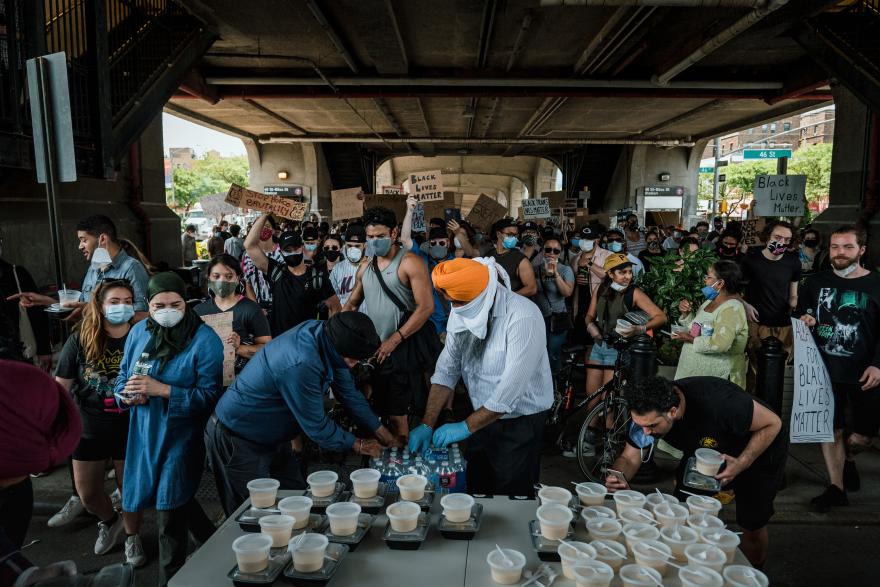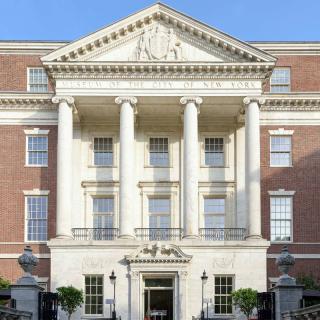City of Faith: Looking Ahead

Looking Ahead
Religion is often seen as the "third rail": a taboo topic for dinner conversations and in the public sphere. Softened to “faith” or “spirituality,” it is usually recast as an intimate or private concern. In reality, however, religion is often a subtext in the very places it is imagined to be absent. Ongoing interactions between—and changing understandings of—religion and secularism have given New York City new kinds of spaces, cross-community solidarities, and cultural products. They have also resulted in new state surveillance tools and discrimination against specific communities.
How will religion and our perceptions of it change—and change the city—as New York’s demographics and environment and the world around us continue to change? The images here provide a glimpse into the futures that religion is part of, as well as possible directions into which our inquiry can be extended.
LEFT
Hillel Robles
[Yoruba Egungun masquerade in Bedford-Stuyvesant]
Undated
Reproduction
Courtesy of Hillel Robles
Africana religious communities have historically faced persecution in New York City and the greater U.S. However, more recently community members have purposefully taken their religion out into public space to assert their right to the city. Turning our attention to this reclamation of public space that happens through clothing, murals, religious ceremonies, and festivals can offer another way to understand how religion and the city shape each other.
TOP
Ryan Christopher Jones
[The Sikh Center of New York distributes meals to those protesting the killing of George Floyd and other Black Americans by the police]
June 4, 2020
Reproduction
The New York Times/Redux
At the height of the pandemic and nationwide protests against the murder of George Floyd, there was a surge of Sikh Americans taking the practice of langar—an act of communal feeding used to break caste barriers—into public space.
With many sangats (communities) unable to gather indoors due to COVID restrictions, they instead focused their efforts on feeding both front-line workers and neighbors in need of assistance. Still other sangats provided food for Black Lives Matter protestors, whose demonstrations against police violence and structural racism some Sikh Americans interpret as a kind of breaking of the caste.





